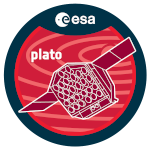Introduction to the PLATO Mission (1h):
The school will begin with an introductory presentation on the PLATO mission to provide context for the topics addressed.
Seismology (5h30 + 2h hands-on):
This first course will cover the principles and theoretical basis of asteroseismology (2h), followed by the data analysis methods developed to characterize oscillations in solar-like stars, which are PLATO’s primary targets (2h). It will also address the analysis of classical pulsators such as γ Doradus stars, key scientific calibrators for the mission (1h30). A lab session will focus on applying seismic analysis methods to solar-like stars.
Speakers: Rafael García (CEA) and Jordan Philidet (LIRA)
Seismic Inferences (3h + 3h hands-on):
This second course will focus on seismic inferences in solar-like stars. It will demonstrate the constraints provided by seismology on stellar characteristics and internal structure (1h30). Special attention will be given to the constraints seismology places on non-standard processes (particularly internal transport processes), which are major sources of uncertainty in stellar evolution models (1h30). A lab session will include practical applications of seismic inference and stellar modeling methods using a public stellar evolution code (Cesam2k20).
Speaker: Gaël Buldgen (U. Liège, BE)
Rotation and Magnetic Activity (3h + 2h hands-on):
The third course will explore stellar rotation and magnetic activity. It will begin with an overview of the theoretical background of these phenomena, with a particular focus on stellar dynamo mechanisms (1h30). Next, it will present and discuss various photometric methods for measuring rotation periods and stellar activity levels (1h30). The impact of stellar activity on exoplanet detectability will also be discussed. The course will be complemented by a lab session demonstrating methods for determining stellar rotation and activity using light curves.
Speaker: Sylvain Breton (INAF-OACT, IT), with contributions from Giovanni Bruno (INAF-OACT)
Galactic Archaeology (3h):
The fourth course will focus on galactic archaeology, which studies the evolution of our galaxy through the analysis of its stellar populations. It will begin with an introduction to standard tools used in galactic archaeology (1h30) and then showcase how seismology contributes to the study of stellar populations (1h30).
Speaker: Andrea Miglio (U. Bologna, IT)
Classical Stellar Parameters (2h):
The final course will discuss classical (non-seismic) stellar parameters determined using other techniques (e.g., spectroscopy, polarimetry, astrometry, interferometry). These parameters will be available for PLATO targets via an ancillary database. This general course will provide a transversal interest across the previous courses.
Speaker: Maria Bergemann (MPIA Heidelberg, DE)
Seminar about Exoplanets (1h):
A seminar dedicated to the study of exoplanets with PLATO.
Speaker: Magali Deleuil (LAM)


